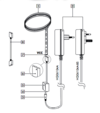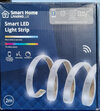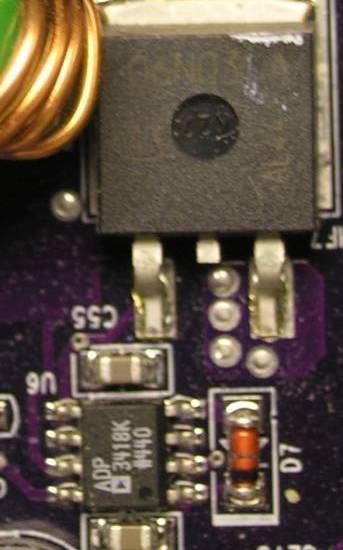However much we personally think a bulb grows in the ground, a lamp is the whole unit that traditionally sat on a spigot, or a transformer is a wire wound device with no electronics, what matters is what name the manufacturer gives to the device, if the manufacturer calls a switch mode power supply voltage regulated a driver, it does not matter how much we think it is the wrong name, its called a driver.
It is the same in other trades, engineer I consider as some one who has gone to University, but in USA he is what we call an engine driver, who around here has to first train as a fireman, and the fireman lights fires, he does not put them out until ready to go home.
But the question was about light output, not the names given to devices, so a LED Light Strip

has a number of components. The box

shows what it is and this

shows what it looks like, it seems one can select either colour changing or colour temperature changing, the wires are labelled FW, G, B, R, C, VCC and there are three chips repeated D1, D2, D3 the D2 has 6 connections and is the colour changing the D1 and D3 are warm white and cool white and one can select the brightness of each to get the colour temperature required, there are three resistors to stop elements being over driven. The power comes from a wallmart (2) but this feeds the LED controller (5) the total power consumption is 22 watt, but the LED controller stops one using the white light and coloured light together, here shown lighting a display cabinet, also have one lighting kitchen counter.
This strip light is bright, in fact two bright, so never run at full output, however the two Ikea strips in the cabinets either side are not flexible, and no where near as bright. The Ikea ones would be useless under the kitchen cabinets lighting the work top, although they do make the ornaments look good.
The problem is one tends to buy strip lighting from the internet, so until it arrives one is not really sure what you are getting, and common not to have any lumen output advertised. The Lidi lights shown do not show lumen output, comparing with other lights I would guess at around 1800 lumen when full on, which is about the same as 4 x E14 bulbs. But the Ikea strip light would be less than one E14 bulb.
I would expect around 60 lumen per watt for more strip lights, although some can be down to 25 lumen per watt, but in the main they are for decoration not lighting a room.








